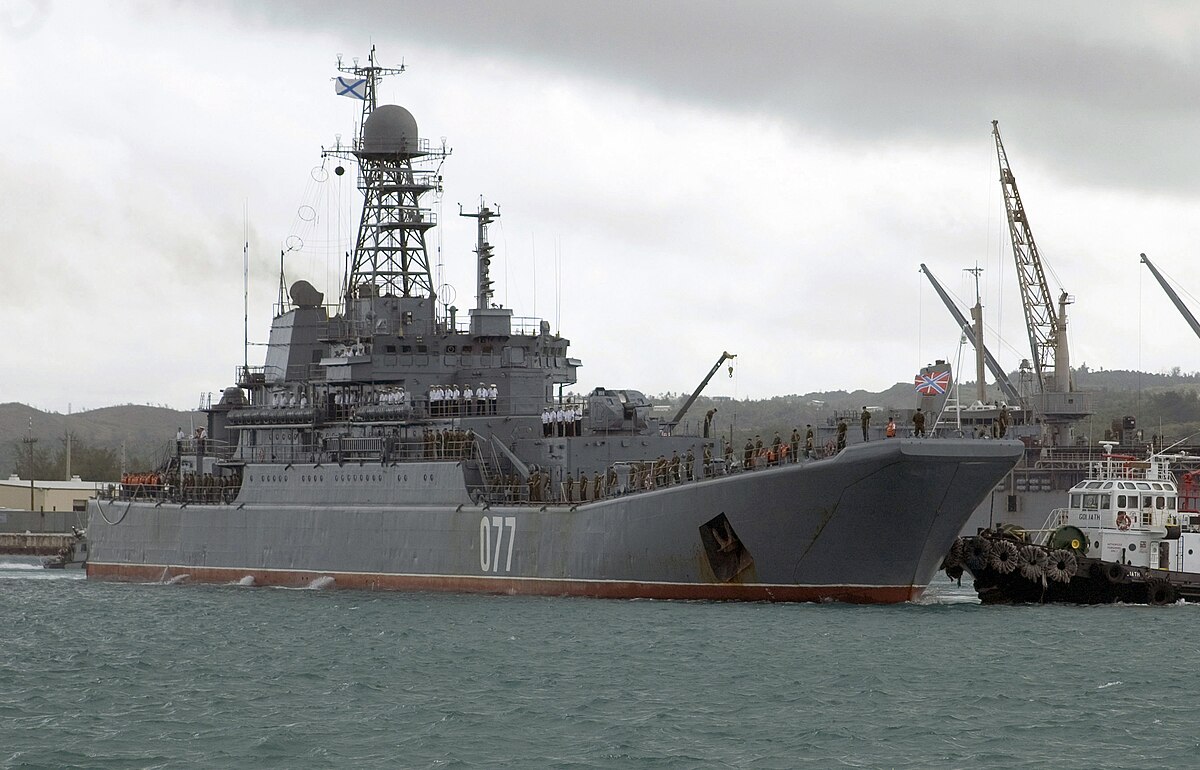Could the war in Ukraine cross new boundaries?

A Ropucha-class ship, a similar model to the one attacked in recent
Ukrainian strikes. This specific ship was photographed in 2006.
Jonah Carlson - Recently, Ukraine once again demonstrated its capability for long-range offense by attacking a Russian warship positioned on the Black Sea, far from the Ukrainian coast. The event has raised questions about Ukraine’s material capabilities and has encouraged discussion around an expanding conflict. Marc Santora and Christiaan Triebert analyzed the event in a recent New York Times article.
Unlike the more abstract concepts of relational and ideological power, material power relies on concrete things, such as how much money a state can wield or how many munitions it has. Thus far, materials supplied by the United States and its allies have played a crucial role on Ukraine’s front lines. Many of those supplies, such as HIMAR missile systems, have been altered to deter or prevent the Ukrainian military from using them to launch offensives on Russian territory. The justification behind such moves was to prevent the war from expanding, potentially introducing new parties to a wider conflict. However, Ukraine has repeatedly demonstrated its interest in widening its targeting potential. Attacks conducted on Russian military bases in December 2022 by Ukrainian drones demonstrate this interest. The most recent attack on a Russian warship continues the trend. Since the outbreak of the war, many realist thinkers have discouraged the supply of certain weaponry — previously M1 Abrams, and now F-16s — to the Ukrainian military, fearing that the increased offensive capabilities could encourage an expansion of the conflict. However, Ukraine’s most recent strike was carried out by a Ukrainian-produced drone, raising further questions on their willingness to expand the conflict on their own terms. Either way, Ukraine’s recent actions may heighten realist fears in Washington, encouraging cautious parties to reconsider their material commitment thus far.
Of course, one must consider the importance of ideological power as well. The Biden administration has framed their support of Ukraine as the lynchpin of democratic freedom, part of their wider “democracy versus autocracy” platform. Biden himself has made numerous statements indicating his intention to continually support Ukraine’s sovereignty and defense, despite resisting meeting President Zelenskyy’s demands for increased funding and weaponry. If Ukraine launches more attacks on Russian shipping and territory, can the narrative of “defending democracy” continue, or will a narrative of “attacking autocracy” supersede it?
Photo source. PH2 EDWARD N. VASQUEZ, USN, Public domain, via Wikimedia Commons.

